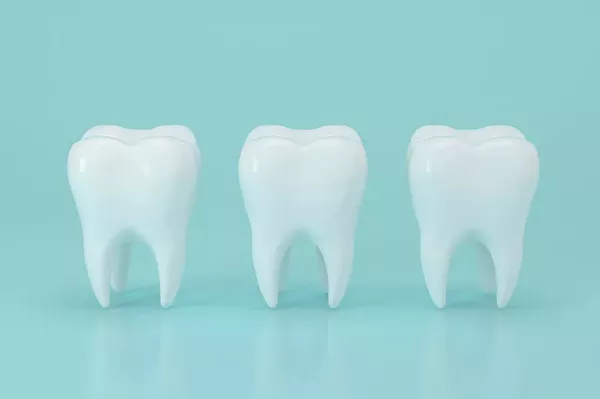Periodontal disease, also known as gum disease, is a common and preventable oral health condition that affects the gum tissues and supporting structures of the teeth. If left untreated, it can lead to severe consequences, including tooth loss and other systemic health issues. Effective treatment and proper oral care play a vital role in managing periodontal disease and preventing its progression. In this article, we will explore six key topics related to periodontal disease, its treatment, and whether it goes away completely after undergoing therapy.
Understanding Periodontal Disease
Periodontal disease is caused by the buildup of plaque, a sticky film of bacteria that forms on teeth. When plaque is not effectively removed through regular brushing and flossing, it can harden into tartar, leading to gum inflammation (gingivitis). Gingivitis is the early stage of periodontal disease and is characterized by red, swollen, and bleeding gums.
If left untreated, gingivitis can progress into periodontitis, a more severe form of gum disease. In periodontitis, the infection spreads below the gumline, leading to the destruction of the gum tissues and supporting bone. This can result in deep gum pockets, tooth mobility, and eventual tooth loss if not addressed promptly.
Periodontal Treatment Options
Scaling and Root Planing (Deep Cleaning):
Scaling and root planing, also known as a deep cleaning, is a non-surgical periodontal treatment performed by dental hygienists or periodontists. This procedure is typically the first line of defense against mild to moderate cases of gum disease, such as gingivitis and early-stage periodontitis.
During scaling, the dental professional uses specialized tools to remove plaque and tartar from above and below the gumline. The process involves carefully scraping away the accumulated deposits, effectively cleaning the teeth and gum pockets.
Root planing is the second phase of the treatment and involves smoothing the tooth root surfaces. This step helps eliminate rough spots and bacterial deposits, promoting the reattachment of the gum tissues to the tooth roots. Smoothing the root surfaces also helps prevent bacteria from adhering to the tooth structure in the future.
Periodontal Surgery:
In cases of advanced periodontitis or when scaling and root planing alone are insufficient, surgical intervention may be necessary. Periodontal surgery aims to access the deep pockets between the gums and teeth, allowing for a more thorough cleaning and repair of the affected tissues.
Common types of periodontal surgery include:
a. Flap Surgery (Pocket Reduction Surgery): In flap surgery, the periodontist creates small incisions in the gum tissues to lift them and gain access to the roots for cleaning. Once the cleaning is completed, the gum tissues are repositioned and sutured back in place, reducing the pocket depth and preventing further bacterial growth.
b. Bone Grafting: When periodontal disease has caused significant bone loss around the teeth, bone grafting may be performed. During this procedure, the periodontist places bone graft material in the affected areas to promote bone regeneration and support the teeth.
c. Guided Tissue Regeneration (GTR): GTR is a technique used in conjunction with flap surgery and involves placing a barrier membrane over the treated area. The membrane prevents gum tissue from growing into the bone space, allowing bone regeneration to occur.
Dental Laser Therapy:
Dental laser therapy is a minimally invasive and precise approach used in periodontal treatment. It involves using focused laser energy to remove infected gum tissues and promote the growth of healthy tissue.
Laser therapy has several benefits, including reduced bleeding, minimal discomfort, and faster healing compared to traditional surgical methods. It is particularly effective for treating gum disease in specific areas without harming surrounding healthy tissues.
Antibiotics:
In some cases, topical or systemic antibiotics may be prescribed to manage bacterial infection associated with periodontal disease. Antibiotics can be administered in various forms, such as mouth rinses, gels, or as pills. They help control bacterial growth and inflammation, especially in deeper gum pockets.
It’s important to note that antibiotics are often used as adjunctive therapy and are not a standalone treatment for periodontal disease. Proper oral hygiene and professional periodontal treatment remain essential components of managing the condition effectively.
Supportive Periodontal Therapy:
Supportive periodontal therapy, also known as periodontal maintenance, is a critical phase of post-treatment care. After the active phase of periodontal treatment, patients enter a maintenance phase to ensure the long-term success of their periodontal health.
During supportive periodontal therapy, patients undergo regular dental check-ups and professional cleanings. The frequency of these visits may vary based on the individual’s specific needs, but they typically occur every three to four months. The dental professional carefully monitors the gum health, performs thorough cleanings, and addresses any signs of gum disease promptly.
Can Periodontal Disease Go Away After Treatment?
The success of periodontal treatment depends on various factors, including the severity of the disease, the patient’s overall health, and their commitment to oral hygiene and follow-up care. With timely and appropriate treatment, the progression of periodontal disease can be halted, and the gum tissues can heal. In many cases, the symptoms of gum disease, such as redness and swelling, will improve significantly after treatment.
However, it is essential to note that periodontal disease is a chronic condition. Once an individual has experienced periodontal disease, they may be more susceptible to its recurrence in the future. Therefore, regular dental check-ups and continued oral care are crucial to maintaining healthy gums and preventing further issues.
Importance of Post-Treatment Care
After undergoing periodontal treatment, post-treatment care is vital to ensure the long-term success of the therapy. The dentist or periodontist will provide specific instructions on oral care practices, including brushing, flossing, and the use of antimicrobial mouthwash. Patients are advised to follow these instructions diligently to prevent the recurrence of gum disease and maintain optimal oral health.
Additionally, regular dental check-ups and professional cleanings are essential to monitor the condition of the gums and teeth. These visits allow the dentist or periodontist to detect any signs of gum disease early on and address them promptly.
Long-Term Management of Periodontal Disease
Managing periodontal disease is an ongoing process. It involves not only following a consistent oral hygiene routine but also adopting a healthy lifestyle and addressing risk factors that contribute to gum disease.
Some important steps for long-term management of periodontal disease include:
a. Smoking Cessation: Smoking is a significant risk factor for gum disease. Quitting smoking can significantly improve oral health and reduce the risk of recurrence.
b. Balanced Diet: A well-balanced diet rich in nutrients is essential for supporting gum health and overall oral hygiene.
c. Stress Management: Stress can impact oral health, so managing stress through relaxation techniques can be beneficial.
d. Regular Dental Visits: Regular check-ups and cleanings with the dentist or periodontist are crucial for ongoing gum health assessment and early detection of any potential issues.
Conclusion
Periodontal disease is a common condition that affects the gums and supporting structures of the teeth. With appropriate and timely treatment, the progression of periodontal disease can be halted, and the gums can heal. However, periodontal disease is a chronic condition, and post-treatment care and ongoing oral hygiene are essential to prevent its recurrence.
Maintaining a healthy lifestyle, quitting smoking, and following a well-balanced diet contribute to optimal gum health. Regular dental check-ups and professional cleanings are crucial for monitoring the gums’ condition and addressing any signs of gum disease promptly.
By understanding the importance of periodontal care and committing to proper oral hygiene practices, individuals can effectively manage periodontal disease and maintain a healthy and beautiful smile for a lifetime.
Related Topics:































